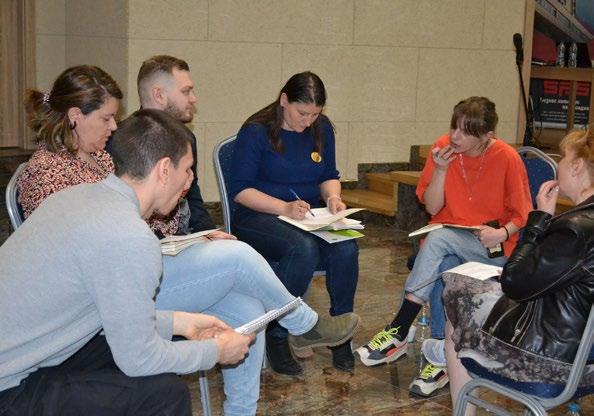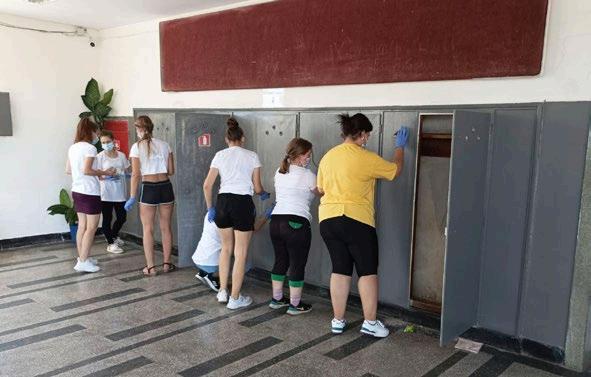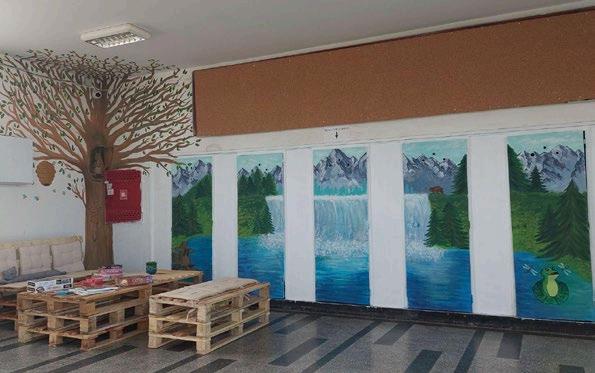
5 minute read
Tool 2: How to efficiently engage diverse people you want to work with?
TOOL 2
How to efficiently engage diverse people you want to work with?
Advertisement
STAGE IN THE COMMUNITY-LEAD PLACE-BASED PROCESS: I Stage. Define the Community 2
PARTICIPATION LEVEL ON THE LADDER: 3. Informing WHEN TO USE THIS TOOL: Do you have an idea for a placemaking intervention and a potential timeline and funding? Do you already know your stakeholders, and just want to make sure that you attract a wider range of people? If yes, you are ready to use this tool first, before beginning other work! HOW TO BEST USE THIS TOOL: Use this tool together with the tool “Identifying Stakeholders”, or on its own if you are already very familiar with and have mobilized stakeholders. TYPE OF ACTIVITY: Desk work and contact with local groups and individuals. DURATION: Planning and making contact: 2-5 hours.
Participation level on the ladder 7 8 6 4 1 3 5
PART 1. GETTING READY
STEP 1.
UNDERSTAND WHY INCLUDING PARTICIPANTS AMONG DIVERSE GROUPS IS IMPORTANT • It will be more representative of the full community • Your group can gain broader community support • More different opinions will likely be expressed and discussed–meaning better decisions may get made. • Because a diverse, multi-sector membership is usually also a larger membership, you will then have more talent, and also more varied kinds of talent, at your disposal. • Because the contacts and connections made in a diverse, multi-sector group lead to new community relationships – and these relationships can spark new community initiatives that might never have otherwise existed. • Having a socially inclusive process also enables long-term sustainability for the project, by building wider ownership.
WHY USE THIS TOOL:
• To identify the range of participants that should be involved in your project. • To inform diverse groups about your project idea. • To find diverse partners for your project. • To identify opposition to your project. • To connect with the local community.
STEP 2.
IDENTIFY POTENTIAL PARTICIPANTS AND CREATE A CONTACT LIST 1. Think about the different sectors of the community. The following categories are one way to look at the community of possible participants: • Social institutions like schools, churches, businesses, media and government. • Other common organizations like day care centers, ethnic clubs or associations, hobby groups, libraries, etc. • Specialized groups like professional sports teams, local health clubs and gyms, wildlife conservation, etc. • Individual citizens 2. Begin to think about potential partners from the categories above. For example, start with the category “social institutions,” and the first category
“schools”. Think of the different types of schools (primary, high schools, kindergartens, colleges, and universities), and who you might know in these institutions to connect with. Make a list of all the names that you can think of, going through the entire list in the different sectors. 3. Gather names for the sectors/organizations/institutions for which you are missing contacts. 4. Add full contact details to your list. More specifically, take down the names, addresses and phone numbers of all those individuals and groups who might be potential participants. 5. After you have collected all your names, put them in rough priority order. Your priorities should be based upon how much you desire that person (or group he or she represents) to become a member of your organization. • What skills or talents do you need for your group? • What can this particular member contribute?
Divide names into "A," "B," and "C" lists, with "A" being top priority, and of a size roughly equal to the number of new names you want.
Keep in mind that names will change, so your list will need to be updated every so often.
Read some TIPS about how to find the contact information for the sectors / organizations / institutions that you are missing on page 7
STEP 3.
HOW TO SUPPORT PARTICIPANTS TO TAKE PART IN YOUR PROJECT
Three types of support that need to be considered to ensure participation in your activities/events: • Support to help people engage like information about the activity, skills training • Logistical support like expenses, translators, income remuneration, childcare provision • Incentives like food, financial incentives, choosing an appropriate time of day for a workshop Here are some questions that can help you to identify the type of support that
participants may require:
• Are there wide gaps in knowledge, skill or experience between the different participants? • Are there cultural factors that should be taken into account? • Are there language barriers? • What’s in it for the participants? • Is it appropriate to incentivise people to take part by offering money or vouchers? • Are there cultural barriers?
PART 2. MAKING CONTACT WITH PEOPLE YOU WANT TO WORK WITH
1. Prepare an excel sheet with contact information. Keep this private within your organization. 2. If the individual you are contacting is representing an institution or organization,
read a bit about the organization
3. Introduce yourself, your organization or affiliation, and what you are working on. 4. Ask them about any concerns that they might have, their interest in the project, and if they would like to be involved. 5. Tell them about your planned timeline, and any upcoming workshops activities 6. Ask them if they could share information with their colleagues and members. 7. Ask them if they would like to be included on a contact list for more information.
HOW TO MOVE UP ON THE LADDER DO: Enable residents and affected individuals to help make decisions during urban interventions. It is important to ensure that these processes are built on principles of equality, inclusion and accountability, to make sure that no individual or group is excluded on the basis of their ethnicity, religion, gender, disability or age.
INSPIRATION
HOW CAN WE MOTIVATE YOUTH TO PARTICIPATE? By using chat groups, sending reminders, and being flexible!
The organization “Can You Foundation” was successful in mobilizing youth to transform their high school, by setting up a group chat and organizing meeting times when it worked best for 4 or 5 youth, and keeping them engaged and responsive by reminding them that it’s okay to say no sometimes!
BEFORE
AFTER

Read more about “Can You Foundation”











